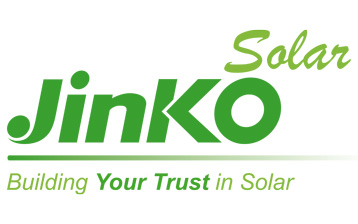In the second quarter of 2017, Jinko dispatched approximately 3 GW of photovoltaic panels, thanks to the lower selling prices.
Net increase of shipments compared to the first quarter and 2016
Jinko has established a new record of shipments in the second quarter of 2017 with 2,888 MW shipped.
By comparing shipping data with those in the first quarter of 2017, it showed an increase of almost 40% and 68.1%, compared to the same period of 2016.
This leads to a total of nearly 5 GW of photovoltaic panels shipped in 2017.
Looking at the economic side, revenues for the second quarter of 2017 exceeded of 37.2% the first quarter of 2017 and 39.8% in the second quarter of 2016. Despite this, net income was slightly lower than in the first quarter and was sixth compared to the second of 2016 .
However, CEO Kangping Chen was satisfied with the results of the second quarter. In previous quarters, for example, JinkoSolar has been able to gain new records in sales of its modules.
“While ASPs declined over the course of the quarter, prices throughout our supply chain remained relatively high and have affected profit margins. We have also worked with our OEM partners more widely than expected during the quarter to ensure a delivery timely, which negatively affected our margins, “commented Chen, commenting on the results. In the second quarter, Jinko Solar had to rely even more than expected on its OEM partners in order to ensure the punctuality of its modules. This was also the case for margins. “We are examining our strategy to improve profitability and further reduce the use of OEMs in progress.”
Strong demand from the Chinese market for Jinko modules
The significant increase in sales in the second quarter was due in particular to strong demand in China, driven by incentives in mid-2017.
“This momentum is moving ahead in the third quarter with Top Runner projects, Poverty Reduction Projects and DG projects that generate a stable demand that should continue throughout the rest of the year,” Chen added.
For JinkoSolar, China lends itself to being the largest market, both short and long-term.
Emerging markets and the United States
On the other hand, he wants to continue to remain active in the United States, despite the uncertainties found in Section 201 investigations, as it provides for a long-term remaining a cheap market.
In addition, demand for emerging markets such as India, Mexico, Argentina, Brazil, Egypt and Jordan continues to grow.
Forecasts for the second part of 2017
Thanks to the expansion of PERC’s mono-wafer and solar cells, combined with the use of new technologies, Jinko has signed a new strategic partnership for the production of cell technology.
Finally, looking at the second half of the year, Chen explained that orders are coming and starting to occupy already in 2018, so he expects an increase in profitability.






